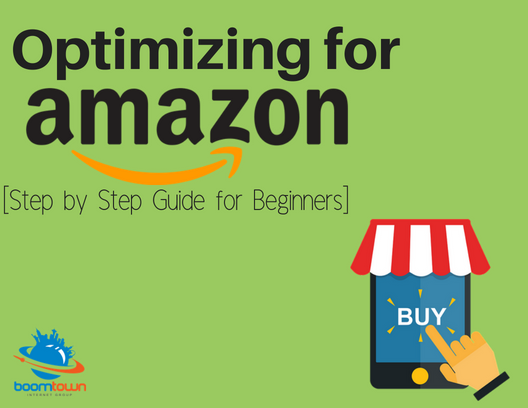Once you have your Amazon store up and ready, the next step is pretty obvious- it’s time to list your products and start making money! Continuing with our Amazon blog series, we’ve created a step by step guide complete with best practices, optimization tips and selling tricks to get your products up and going as quickly as possible. Although every product is unique and could potentially require additional fields to sell on Amazon, our guide will cover the basics to get you going.
Elements of a Great Amazon Product Listing
Crafting a successful Amazon listing takes time, research, testing, monitoring and on-going management. You not only need to optimize your product listing with the highest converting keywords but also include images and copy that are captivating enough to entice buyers to click on your products, all while keeping your price competitive. There are a few elements that high-performing Amazon listings should include, which are:
- Content that can be quickly scanned
- Captivating and engaging images
- In-depth product descriptions
- SEO-driven keywords
These four elements are important to keep in focus throughout the process of setting up Amazon product listings. I will dive into each deeper later in the post.
How to Create an Amazon Product Listing
Step 1: Once you log into your Amazon Seller Central account, click on the drop-down item “Add a Product” underneath “Inventory” in the main navigation bar
Step 2: Choose one of the three methods for creating a new product that fits your product’s situation.
- Add a product that is already on Amazon by searching by the product’s name or ID
- Create a new product listing
- Bulk upload
For the sake of this guide, we will be going through option #2- Create a New Product Listing
Step 3: Next, you’ll be prompted to assign your product to a category by either using the search categories feature or browsing through the categories.
Step 4: It’s time to start filling in all the details and information about your new product listing. To complete your product listing, you’ll have to complete 7 tabs of information, which are: Vital Info, Variations, Offer, Images, Description, Keywords, and More Details
- Tab #1 – Vital Info
In this tab, you’ll have to include most of the basic information about your product. The most important section in this tab is your Product’s Name as it quickly explains what your product is for both potential customers and the Amazon algorithm. For this reason, it’s important to pack in as many keywords and features as possible within the 250- character product name limit.
Best Practice for Amazon Product Title
- It is important to know your top converting and most searched keywords as you generally want to put these search terms at the front of your product title.
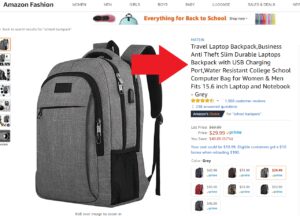
- Manufacturer and Brand Name
- Manufacturer Part Number
- Package Quantity
- Material Type
- Color Map- You can enter the color of your product here. Typically, you would leave the color map part empty. If you are selling multiple colors of your product, you can make this clear once you get to the variety tab.
- Shape
- Lens Color
- Size
- Hand Orientation and Tension Supported
- GTIN Exemption Reason- Most products are required to have a GTIN (Global Trade Identifier Number) which is generally a UPC or an ISBN. However, you can be given an exemption depending on your product category.
- Related Product ID Type and Related Products ID- If your product is linked to another product, you should enter the other product’s ID here. For example, if you’re selling fish reels that are only compatible with a specific fishing rod, then you’d link the reels to the rod’s UPC here. If your product is a standalone product, leave this section empty.
- Item Display Dimensions and Weight
- Weight Supported and display Maximum Weight Recommendations
- Shaft Length
- Product ID- Every product sold on Amazon requires a Product ID (UPC). You can check with the product’s manufacturer for this information or if you’ve created a private label product, you’ll want to purchase an unique UPC code for your product.
- Tab #2 – Variations
For products that are available in a variety of sizes, colors, etc., you’ll want to build out those options under this tab. You can do this by opening up the drop-down menu and clicking on the variation type that fits your product. Simply fill out all the necessary information, then click ‘add variations.’ - Tab #3 – Offer
Fill out this tab with the appropriate information when applicable to your product. Categories covered under this tab include:
- Import Designation
- Country of Publication
- Seller Warranty Description
- Release Date
- Country as Labeled
- Is Gift Wrap Available and Offering Can Be Gift Messaged
- Tax Code
- Fulfillment Latency
- Restock Date
- Legal Disclaimer
- Start Selling Date
- Signed By
- Fulfillment Channel
- Tab #4 – Images
As I touched on earlier in the post, your product images are a critical component and selling point for your Amazon listing. Since 90% of the information transmitted to our brain is visual, high-quality product images can capture your customer’s attention and help convince them to make a purchase. When it comes to images for your Amazon product listing, consider these tips:- Amazon allows up to 9 images, therefore you should use all 9 images. Consider including images that show product packaging, the product being used, the product from multiple angles and the size of the product
- Your images should be high-res, Amazon recommends that all product images should be at least 1,000 pixels in height or width.
- Edit your images to make the product stand out
- Tab #5 – Description
Your product description is one of the most important sections for getting your product listing found and ultimately driving sales. The Description tab is divided into two sections: Key Product Features and Product Description.- Key Product Features
This is where that “content that can be quickly scanned” that we touched on earlier comes into play. The Key Product Features are the bullet points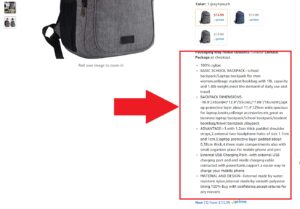
- Be sure to include keywords in each bullet point
- Put your most important points, keywords or features towards the top of the list
- Use as much space as Amazon allows
- Include all major product features and benefits
- Include information regarding care instructions, warranties, product guarantees, size, dimensions, etc.
- Stick to clear, concise points
- Product Description
- Key Product Features
Although most of the meat of your product listing should be in your Key Product Feature bullet points, your product description is another place to include important keywords in a creative and skim-able way.
An Amazon buyer isn’t going to read your entire product listing but rather skim through it to determine if they want to make the purchase or not. Use this space to address how your product solves your customer’s potential problems or needs. Take the time to look at reviews and complaints on your competitor’s product listing and consider addressing those complaints in your product description in a way that indirectly proves your product’s superiority.
While this may be obvious, it’s critical that your Amazon product listing includes unique content – different from the exact product wording on your own website, in order to avoid a duplicate content issue.
- Tab #6 – Keywords
Although no customers will see the information you include here, the Keyword section is another important component of an Amazon product listing. Amazon uses the keywords you include in this section to enhance the discoverability of your product. In-depth keyword research is extremely important in order to have enough keywords to use in your product title, key product features, description, and search terms. Try and include as many unique yet relevant keywords in this section as you can. Remember, if you’ve already used a keyword elsewhere in your title or description, you don’t need to include it in this section as well. - Tab #7 – More Details
This tab is customized based on your product category and is pretty self-explanatory. The only component worth addressing in further detail is pricing. Amazon will ask for two specific prices: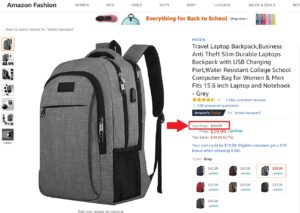
- Manufacturer Price: This is not the price your customer would pay but rather it appears on your listing next to the marked down Amazon price.
- Sales Price: This is the actual price your customer will pay for your product. So, how do you determine the sweet spot in price for selling a product on Amazon? Research! Look into what the top ranking competitors for your product are charging on Amazon. If you’re on the more aggressive side, match the lowest price without going lower (as pricing your product lower than the lowest competitor could start a chain reaction of lowering prices which can erode margins). If you’re on the more conservative side, price your product between $0.01 and 1% higher than your lowest priced
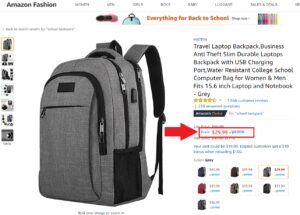
Do You Need Help Driving Sales on Amazon?
A well-crafted Amazon product listing is key to driving sales on the platform. Since the marketplace can be highly competitive for a buyer’s attention, standing out against your competitors with eye-catching images, enticing yet thorough product information and trustworthy customer reviews will help motivate buyers to make a purchase. By considering how buyers will come across and perceive your listing along with researching the top keywords, you can craft a highly visible and valuable product page. Whether you’re creating your first product listing on Amazon or are a seasoned seller, utilizing these best practices and tips will give your Amazon rankings and sales a serious boost.
Contact us today to learn about how our Amazon selling and marketing services can help increase sales and expand your business. Keep an eye out for the next blog post within our Amazon series on Marketing on Amazon.


